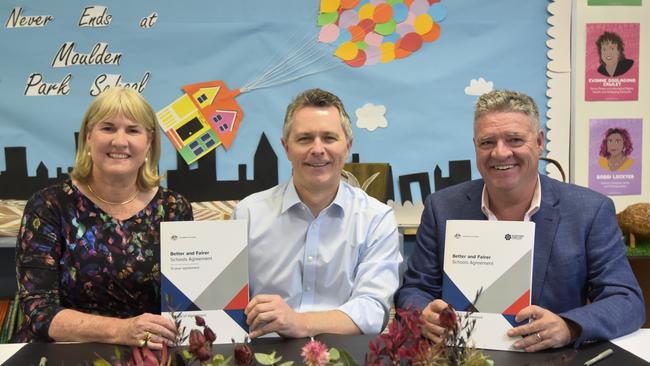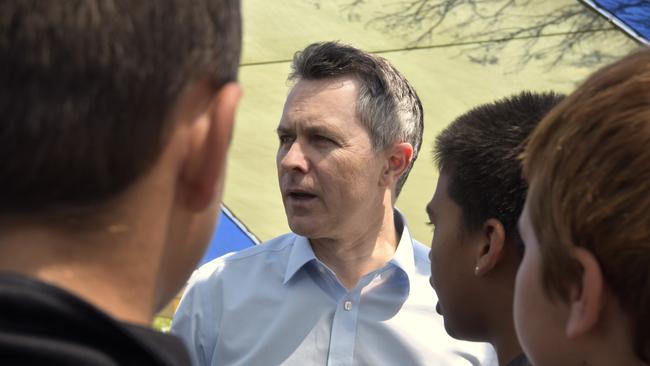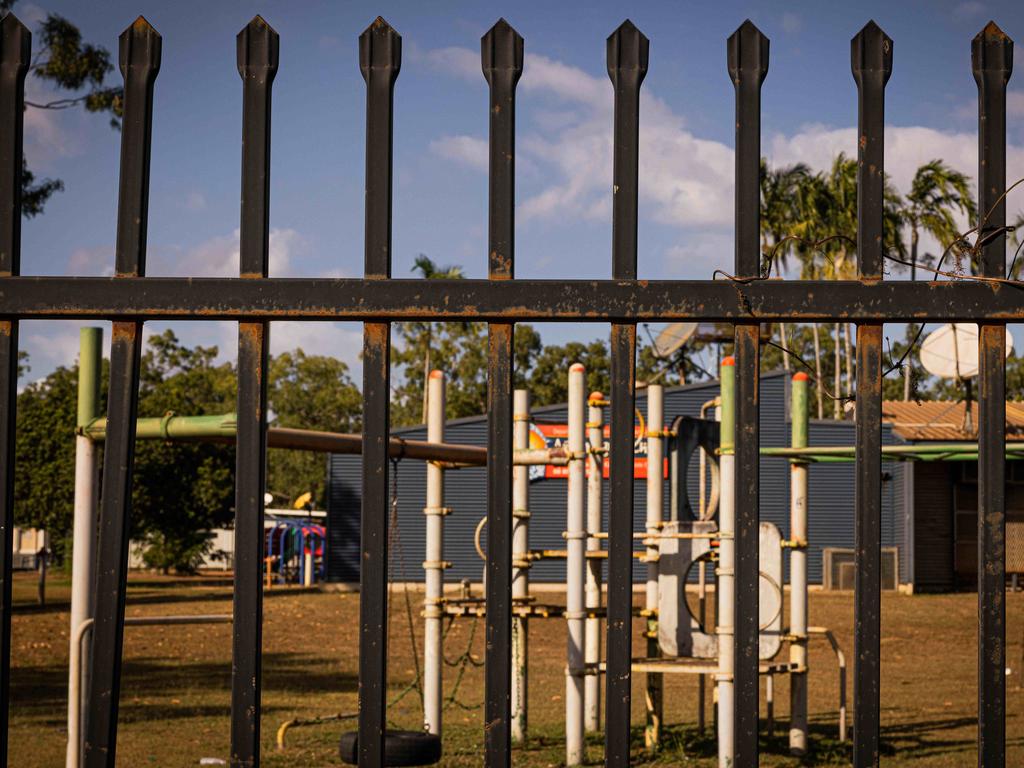NT takes the cash despite dire education outcomes
The Northern Territory has signed on to the federal government’s strict new targets for teaching and learning outcomes, despite indicators showing declining results and diminishing aspirations, particularly for Indigenous students.

Northern Territory Labor has signed on to the federal government’s strict new targets for teaching and learning outcomes as it heads into a difficult election campaign, despite its own data showing declining results and diminishing aspirations, particularly for Indigenous students.
Among some of the most dire results in 2022-23 were 28 per cent of Year 7 Aboriginal students failing to meet minimum numeracy standards; Aboriginal attendance rates of 57 per cent; and only 32 per cent of Aboriginal Year 12 students completing the high school certificate.
In exchange for $738m in extra federal funding over the next five years under the Better and Fairer Schools deal, the NT government has agreed to improve NAPLAN results, lift attendance rates and increase the number of students leaving school with a Year 12 certificate, in particular the proportion of Indigenous students attaining that or equivalent qualifications.
Chief Minister Eva Lawler made the deal with federal Labor the day before the writs are issued for the territory election.
Ms Lawler is facing a tough fight from the Country Liberals to hold on to her majority in parliament. NT Labor has gone through three different chief ministers in one term and faced crises in education and crime over the past four years. The NT government also committed to an extra $350m over the same period under the agreement.
Federal Education Minister Jason Clare signed the agreement in Darwin on Wednesday, reiteratinng that the federal funding wasn’t a “blank cheque” and came with strings attached.
“I’ve said from day one that this funding needs to be tied to reform – the sort of the things that are going to help kids who fall behind catch up and to keep up and to finish school,” Mr Clare said.
“Because the truth is, we’ve got a good education system in Australia, but it can be a lot better and it can be a lot fairer.”
Research leader for education and training with the Batchelor Institute of Indigenous Tertiary Education John Guenther said the funding had “recognised the need to do something, particularly for Indigenous students, who have been left behind as a result of systemic failure”.
While he welcomed accountability measures in the funding agreement, Professor Guenther said the Territory’s declining outcomes reflected the “reality” of an education system that had been crippled by underfunding.
He also said the “gap in expectations” between Indigenous and non-Indigenous students had helped enable conditions in remote schools to deteriorate.
“I think there isn’t an expectation that 96 per cent of young people will achieve Year 12 or equivalent at the moment,” he said.
“And so we accept a lower standard of education provision. And we accept that it’s okay to offer Homeland Learning Centres [remote classrooms] only two days a week. And we accept that it’s okay not to offer secondary education in remote communities.”

The NT Department of Education currently reports against its own 22 performance targets — four related to school and preschool attendance, 16 about NAPLAN outcomes and two about senior secondary education completion.
Of the 16 NAPLAN targets set in 2021-22, the department met only two, failing to meet some goals by more than 25 percentage points.
Newly compiled figures show that in response to the failing KPIs since 2021, the department dropped its yearly targets.
For example, in 2021-22, the NAPLAN Year 7 reading goal for Aboriginal students was set at a 55 per cent pass, but the cohort only reached 35 per cent; in 2022-23 the target was lowered to 39 per cent – but only 37 per cent passed.
Similarly, the numeracy goal for Year 7 Aboriginal students in 2021-22 was set at 61 per cent, but only 33 per cent was achieved; the KPI was dropped to 50 per cent in 2022-23. That year, only 28 per cent of students achieved minimum numeracy standards.
Despite lowering the KPIs, the NT failed to meet 10 of the 16 goals in 2022-23, and would have failed all but two of them if the original targets hadn’t been reduced.
There are no 2023-24 goals, because the NAPLAN classifications have changed.
Under the new funding agreement, the NT and other jurisdictions will have to lift the number of students in the lowest “needs additional support” NAPLAN category for reading and numeracy by 10 per cent, and increase the number of highest-performing students.
NT Education Minister Mark Monaghan noted the NT’s unique educational challenges, including more than half of students living in remote or very remote areas, with English as a second, third or even fourth language.
“We absolutely recognise hard work is required to ensure our NAPLAN results stop declining and start improving, and today’s billion dollar bilateral agreement is the beginning of a new age of Territory education,” Mr Monaghan said.
“Today’s agreement means more schools will be able to employ more experienced teachers, hold smaller one-on-one session to help children catch up and keep up, and grow their wellbeing network to improve engagement and support individual students in their learning journey.”
Under part of the agreement, teacher salaries will increase by about 13 per cent over the next three years.
The new agreement also requires the NT to increase overall attendance from 77.2 per cent in 2023 to 79.7 per cent by 2030.







To join the conversation, please log in. Don't have an account? Register
Join the conversation, you are commenting as Logout